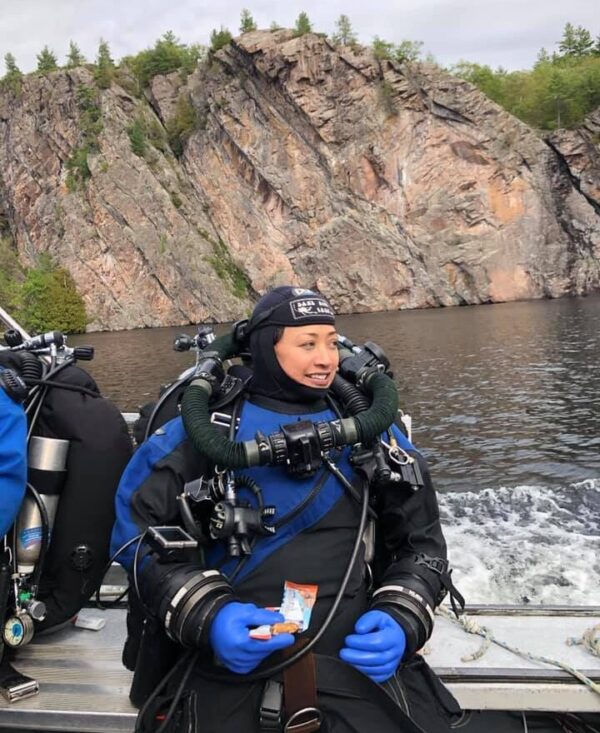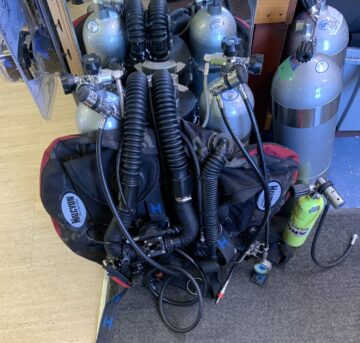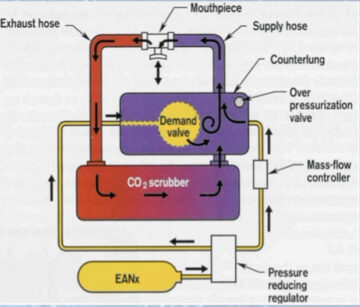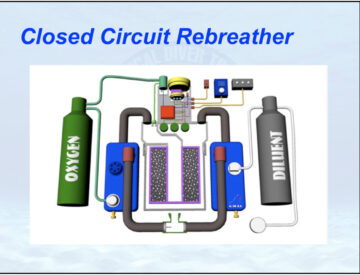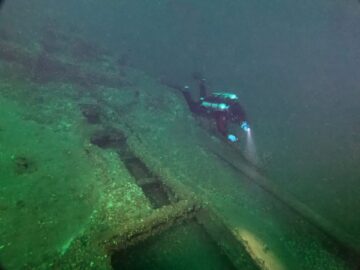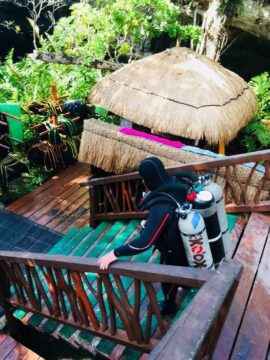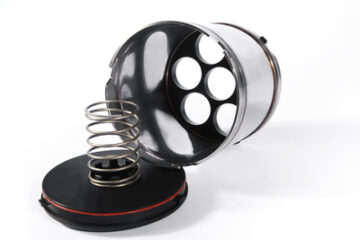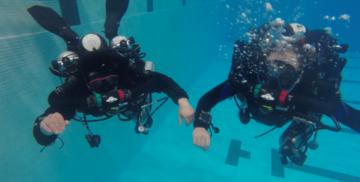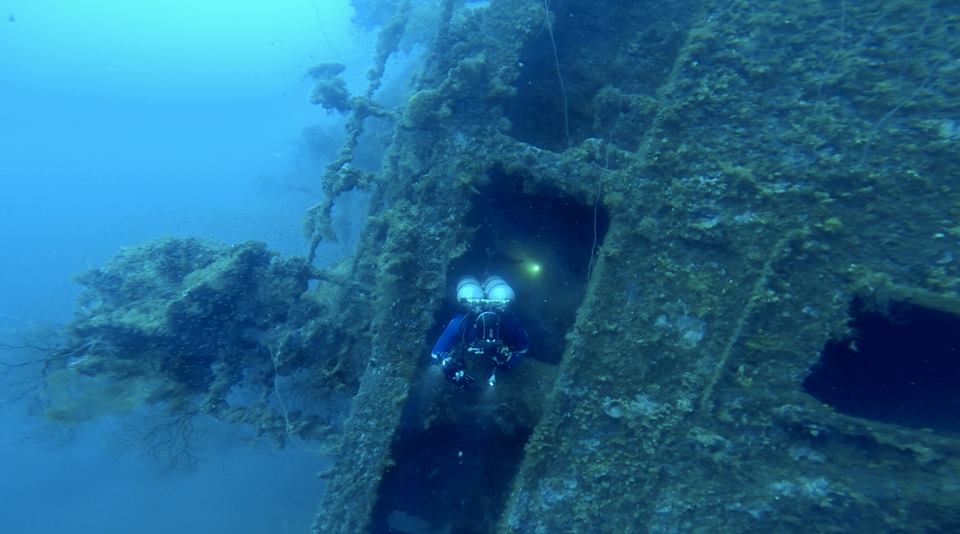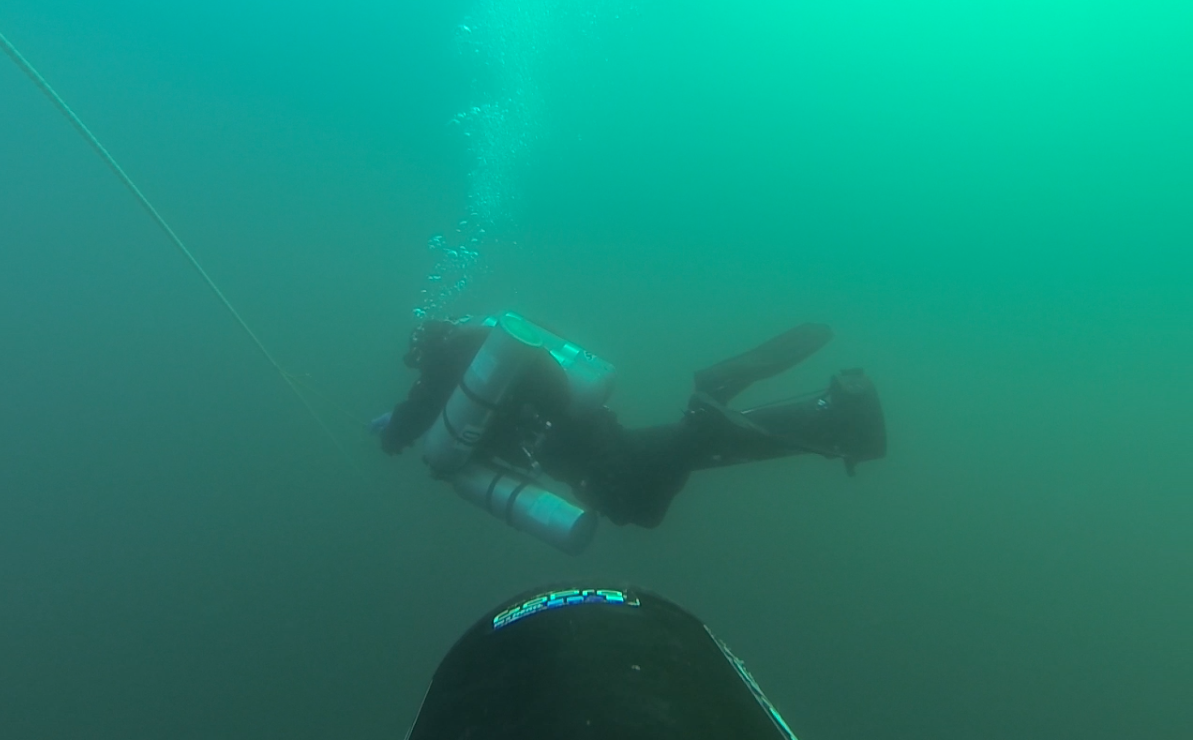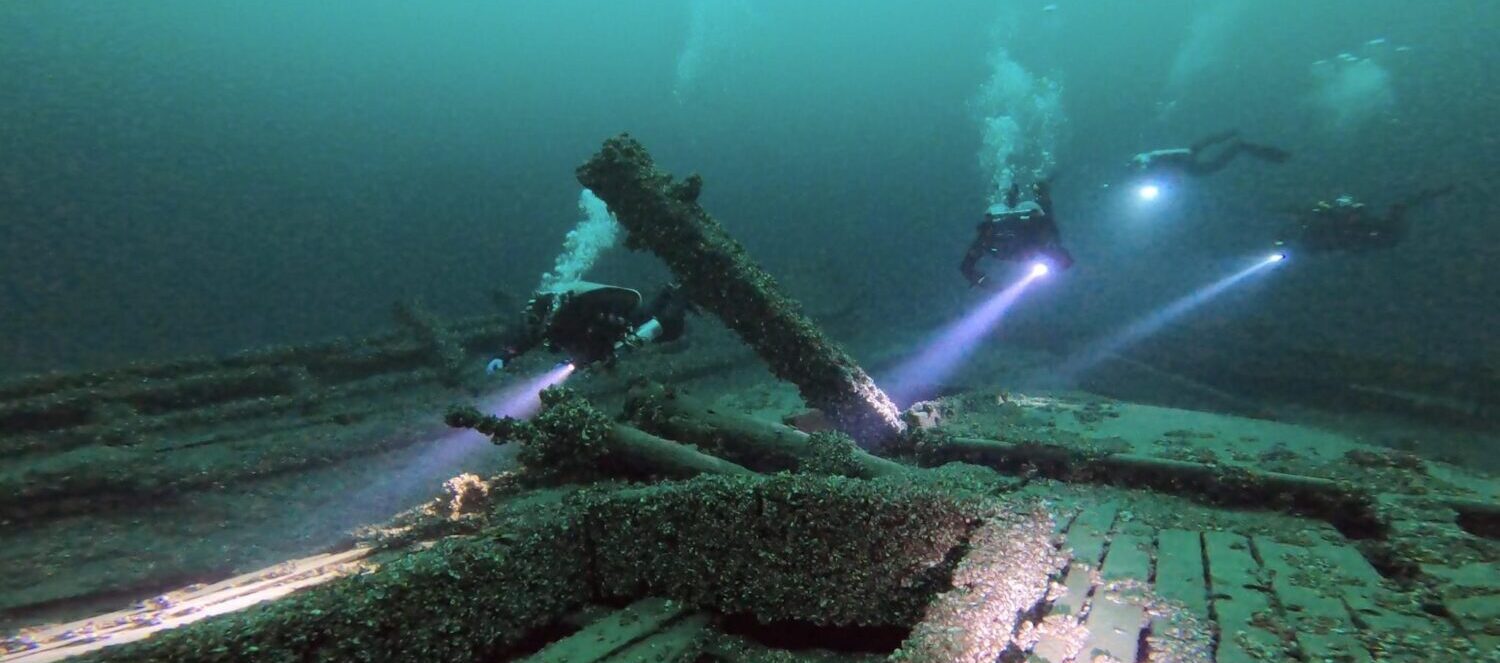Being an Active Scuba Diver
by
Matt Mandziuk
If you want to dive, you need to make the time for it. Being and identifying as a diver are 2 different things and staying current with your skills, knowledge, training and goals are very important.
One of the questions we get a lot in diving is what doest it mean to Being an Active Scuba Diver? You may have noticed after you were certified, you got really, really, really excited and interested in diving, meanwhile, some of your open water class certified down south, a couple of them didn’t finish, etc.
If a person wants to become an active scuba diver, they have to get involved.
Set Goals:
Why did you get into scuba diving?
Was it for a trip? A documentary you watched? A dream destination? An event like a wedding? Regardless of the reason, there was something that motivated you to get into scuba and that is what you should hold onto.
As you accomplish each goal, set a new goal.
I look at my motivations for technical diving for example….dive sites like Bikini Atoll, Hamilton and Scourge (our local 1812 warships in 286′), the Britannic have all been dream dives for me since my teen years, and while I’ve been on an expedition team the last several years for H & S, Bikini was the one dream that came true, flying to Micronesia 27 years after I first heard about this nuclear radiated dive haven.
Current goals are still the one’s above, but also mine diving in Europe, so it comes down to putting your plan together, including team members and getting the required training (if required), permits, etc.
Training goals are also something to consider….a good diver is always learning and always challenging themselves to their highest level of experience/certification.
If you’re interested in diving more, there are several paths that can help you get more involved…the Local/Technical Diving path, the Leadership Diving path, The Traveller Path….Ideally a combination of all 3 are our best option, making Option 4, The Total Diver, the Ideal DDS Diver 😉
Much like keeping up with your dedication to the gym, or a diet, keeping engaged in your leisure activities is key…
Dive Everywhere, Any Time You Can….
You’ll find diving much more rewarding when you can explore all aspects of the underwater world, not just reefs, not just wrecks, no just salt or fresh water, but all of it.
Diving icebergs can be as beautiful as diving a pristine reef in the Red Sea, while diving in a cave can offer a diver a prehistoric journey into the past, as you can see mammoth bones, speleotherms (mineral deposits like stalactites and stalagmites), or diving into the history of famous shipwrecks like the Empress of Ireland, Andrea Doria and more.
The journey to get to these destinations and having these dreams come true are the most amazing times too.
The people you meet, the destinations you visit, landmarks you see and photos you can take are what diving is really all about.
The entire experience isn’t just time spent underwater, it’s the history and the lessons learned along the way too.
Paths that Inspire
When people start to scuba dive, they have ideas, dreams, goals……following through with those plans is key.
The Local Cold Water/Technical Diving Path
You really wanted to get out diving, so you started diving weekly with similar minded people in the summer in wetsuits, however once you started training in a drysuit, you noticed you wanted to go diving more and your wetsuit buddies didn’t, so you met some more drysuit divers and you had some great adventures.
While each your you’ll see new wetsuit faces on the boat, unless they move into a drysuit, those faces seem to change with each passing year, meanwhile the same drysuit divers are on all the same charters, trips and events, so after Open Water Diver, or as part of O/W or Advanced, combine it with the PADI Drysuit Specialty Course option.

Why is that? Because drysuit diving extends your level of comfort, extends the time you can spend underwater, rejuvenates your bodies warmth faster than a wetsuit and of course is a lot easier to get in and out of, layer up for added warmth, and they last a significant amount of time longer than a wetsuit which has a 2-4 year average life span or about 100 dives.
Drysuit diving also leads the diver into more exciting environments.
Have you noticed that most of the drysuit divers are diving twinset double tanks? Rebreathers? Sidemount?
They’re doing more exciting dives than just the local shallow shore dives in favour for more exciting diving ventures like shipwrecks, caves, maybe even technical diving sites, but it takes time and skills to progress and in a society of instant gratification, sometimes people just want to do the bare minimum and that’s okay too if that makes them happy.

So Divers if you want to dive more, get out, practice your skills with more likeminded people and challenges yourself through continuing education classes.
Whether you stay more recreational and participate in PADI Specialty training at the recreational level and work towards becoming a PADI Master Scuba Diver or you work towards a more technical path, an active diver who’s always learning is the best diver.
Moving into technical diving…Divers come from all over North America to train with us. Why? Because we offer the most thorough and rewarding technical diving training that embraces our training and experience we’ve gained from training with instructors (past and present) from all training agencies.
Our NTEC Doubles Primer workshop/classes are the start of things to come for those wishing to start working towards their Foundational Skills classes like Intro to Tech and to get to their dream goal..
Intro to Tech is the measuring stick for divers looking to become a better diver with buoyancy, trim, comfort and familiarity with their doubles setup. Skills are broken down into specific sets that increase with each dive. The class is video’d, students watch and debrief after each day in the classroom and upon successful completion are able to start accomplishing their goals like caves, wreck penetration, technical diving, diving with helium based mixes and more.
You’ll notice the technical divers are very active and very involved and that is what makes our diving community so special. We have a lot of active DDS Divers who just love to get out and work on skills and mentor newer divers.
Diving can be the most extreme, or the most meditative experience in the world and the dive needs to find what “does it” best for them, but never limit yourself saying you’re “never going to….” and just get the most experience in as many environments as possible.
The most active divers are our cave and technical divers and aspiring one’s.
The Leadership Path
Divers interested in becoming a leader in diving, can work towards professional ratings, completing advanced, rescue diver and moving towards the coveted PADI Divemaster certification, which is the first leadership level (Professional) in PADI. From there Divers can complete their PADI Assistant Instructor Class and PADI Instructor Development Course.
Dive leaders are an essential part of the training process. If you think back to your open water class, there’s a chance you had a Divemaster to help acting as a role model and as an intermediary person to talk to between the you and the instructor, as sometimes students feel it’s easier talking to a DM rather than an Instructor.

Much like new divers, experienced divers need to keep active and challenge themselves.
We found that if a Scuba Diver doesn’t progress through training or challenge themselves to dive at their highest level, they have a 3 year shelf-life of being “stale” then the disappear.
Cave Divers are the exception so far……Cave Divers seem to stick with it and dive with us for decades.
So how does an experienced diver stay in the sport? Challenging themselves to take a technical diving class like Decompression Procedures/Advanced Nitrox. If they’re certified to that level then Trimix is their next class and then then should look at Rebreathers to save money on the Helium.
With a closed circuit rebreather, the diver can dive a full set of smaller trimix doubles that will save the diver multiple days of having to get their tanks refilled if they have a set of double LP50’s or so, as long as they don’t have to switch to open circuit during the dive, as the breathing efficiency of a CCR is on average 20:1 vs Open Circuit or better, so that diver who’d consume a set of doubles with 1/3 left for reserve will be using only a small amount of gas in comparison to open circuit.
The Traveller Path
A Diver should be as trained as is can be for their dream dive trip, but a vacation diver in a single tank setup can enjoy a lot of good diving around the world without having to go into a lot of extra equipment and training. To do the diving as a recreational diver, a PADI Advanced Open Water Certification with Deep Diver Specialty will cover the average diver to their maximum recreational diving limit of 130’, but in addition to this, a Rescue Diver certification is also highly highly highly recommended, as you never know the dive buddy you’ll be stuck with as a walk-on on a dive vacation….Of course some folks would suggest they do a Solo Diver class to avoid diving with the bad divers also.
Solo Diver training is a lot of fun and very rewarding and it helps to start instilling some of the mindset and skills that a technical diver would utilize on a regular basis.
While most dive boats cater to recreational divers, there are definitely benefits to training up higher, as the wrecks get bigger, better and deeper, the reefs are in better shape away from the masses of divers who flock to the shallower sites, and more bottom time beyond what a single tank can offer is always a bonus.
At the end of the day, being an active diver is the most important thing.

An active diver is defined as someone who dives at least monthly to keep their skills sharp and practical knowledge fresh. There’s nothing worse than an “experienced” diver forgetting how to assemble their dive kit on a dive boat.
Some of the most fun things that happen on a dive trip aren’t even necessarily things that happen under the water, it’s the fun and camaraderie are things that make you laugh and love being a part of the fun.
Liveaboard dive trips are the best value in diving and being at sea for a week means you get to explore the farther away sites that a land based operation can’t journey to.
We’re an authorized reseller for the finest liveaboard operations around the globe and we’re always looking for the next best, next exciting, newest to us destination.
Break the cycle of diving the basic, more public areas and explore more special, road less travelled destinations.
Our Red Sea trip was a huge success this past December, with a lot of exciting trips to Malta, Maldives, Philippines and Micronesia and Europe either booking or being booked at the time of this writing.
The Total Diver
The scuba diver that is active in all environments, all season long who is an active recreational, cave, technical diver are the ideal role model and the ideal candidate we target when we hire Instructors.
 Many of our divers are divers who have been diving for years, logged hundreds of dives and have spent time mentoring and encouraging new divers, advanced and experienced divers and who also enjoys travelling, exploring and everything that diving can offer.
Many of our divers are divers who have been diving for years, logged hundreds of dives and have spent time mentoring and encouraging new divers, advanced and experienced divers and who also enjoys travelling, exploring and everything that diving can offer.
A role model and leader in diving is a professional who logs as many dives for fun as they do for teaching, as there is so much more out there to explore.
Dive with a group of likeminded divers, don’t limit yourself to just 1 or 2 people, because as we often see, a traditional buddy team fades when people have a life changing event, and often times the more keen diver sites on the bench wishing they could dive. So, just come out and dive with the most active dive shop in the business, here at Dan’s.

Travelling divers explore the world more than their own backyard, yet North America offers the some of the best diving in the world, as does Europe, it’s not just about tropical adventures, but exploring what’s in your country, and Canada has some of the biggest and best shipwrecks, deepest walls and most beautiful scenery.
We’re located in St. Catharines, ON, Canada, but we dive the planet and explore and enjoy diving still after all these years!
If you’re looking for amazing places to dive, consider local diving like Tobermory, Kingston, 1000 Islands, Straits of Mackinac. Travel within Canada to Newfoundland and British Columbia, as well as Quebec and see the beautiful reefs and wrecks.
Where should you dive? Anywhere we’re excited to go is a great start!
Join us on trips, charters, social events and training check our events regularly CLICK HERE



